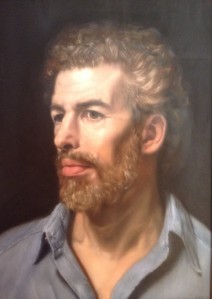In-Sight Publishing
Born to do Math 17 - "It From Bit"
Born to do Math 17 - "It From Bit"
Scott Douglas
Jacobsen & Rick Rosner
March 24, 2017
[Beginning of recorded material]
Rick Rosner: We’re
trying to figure out where the information in the universe is, and we know some
stuff. But it is not completely helpful stuff. When people started talking in
the 70s, Wheeler and other people, there is this famous book called
Gravitation. It is a 10-pound book. An awesome book about gravitation. There’s
this one page about “It from Bit.” That, somehow, there’s a way to look at the
universe as a computer, as a codifier of information, as a processor of
information.
It is like the way the computers process
information. However, if the universe consists of information, it has to do
certain things that when we look at how those things are done in computers they
are very systematic and regimented. But when you look at how things are in the
universe, stars boil for billions of years, then explode, then boil some more,
then they explode again, and then they explode again.
And they bubble down until they blow off their
skin again and again in novas, until you’re left with this core of stuff that
might be neutronium, or might be carbon-oxygen, or it might be a ball of iron
slowly cooling because it can’t do fusion anymore, but it doesn’t look like
those things are really good engines of the systematic storing of information.
So you have to look at two things. Where the universe might store information,
and how the universe might store information that is generated through mess,
non-systematic processes.
The way a fusion goes on in stars is
systematic. It’s a well-understood process, but it takes place among 10^58th
atoms in a typical star, just swirling in this big chaotic mess, and there’s
nothing, even though the physics is well-structured. The actual process is this
chaotic swirl of nearly 10^60th atoms and who knows how many
photons, all ping-ponging off of each other. It really doesn’t seem to be a
good way to store information.
So we know some stuff. We know there’s
information in the clusters. The universe has forms at various scales. The
smallest cluster being, if you don’t count quarks and protons – and you should,
I think, but the smallest clusters beyond that would be nuclei. Protons and
neutrons clustered in atomic nuclei. Beyond that, you have molecules bound by
electromagnetic van der Waals forces that can—things that can stick together
because of electromagnetic forces.
Past that scale, all you have are clusters
gravitationally – asteroids, planets, stars, solar systems, and whatever
groupings, sub-galactic groups there might be within galaxies. Then clusters
and superclusters of galaxies, and then you get into the very largest
structures like filaments, which are like strings of galaxies and some other
junk across billions of light years. So there’s information there.
[End of recorded material]
Authors[1]

Rick Rosner
American Television Writer
RickRosner@Hotmail.Com
Rick Rosner

Scott Douglas Jacobsen
Editor-in-Chief, In-Sight Publishing
Scott.D.Jacobsen@Gmail.Com
In-Sight Publishing
Endnotes
[1] Four format points for the session article:- Bold text following “Scott Douglas Jacobsen:” or “Jacobsen:” is Scott Douglas Jacobsen & non-bold text following “Rick Rosner:” or “Rosner:” is Rick Rosner.
- Session article conducted, transcribed, edited, formatted, and published by Scott.
- Footnotes & in-text citations in the interview & references after the interview.
- This session article has been edited for clarity and readability.
- American Psychological Association. (2010). Citation Guide: APA. Retrieved from http://www.lib.sfu.ca/system/files/28281/APA6CitationGuideSFUv3.pdf.
- Humble, A. (n.d.). Guide to Transcribing. Retrieved from http://www.msvu.ca/site/media/msvu/Transcription%20Guide.pdf.
License
In-Sight Publishing and In-Sight: Independent Interview-Based Journal by Scott Douglas Jacobsen is licensed under a Creative Commons Attribution-NonCommercial-NoDerivatives 4.0 International License.
Based on a work at www.in-sightjournal.com and www.rickrosner.org.
Copyright
© Scott Douglas Jacobsen, Rick Rosner, and In-Sight Publishing and In-Sight: Independent Interview-Based Journal 2012-2017. Unauthorized use and/or duplication of this material without express and written permission from this site’s author and/or owner is strictly prohibited. Excerpts and links may be used, provided that full and clear credit is given to Scott Douglas Jacobsen, Rick Rosner, and In-Sight Publishing and In-Sight: Independent Interview-Based Journal with appropriate and specific direction to the original content.
No comments:
Post a Comment